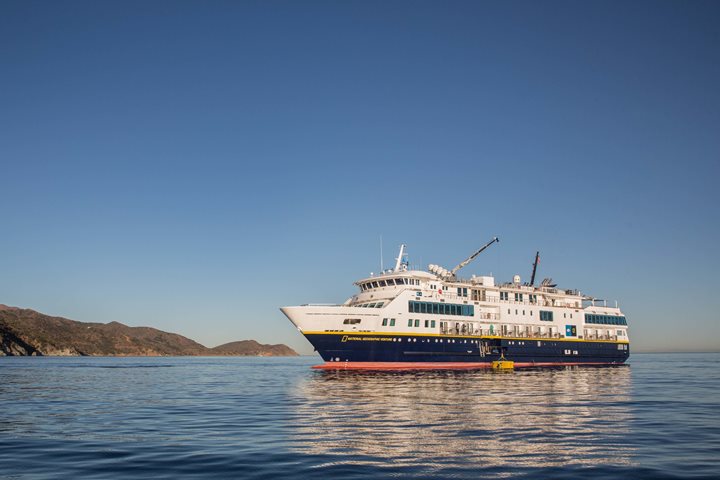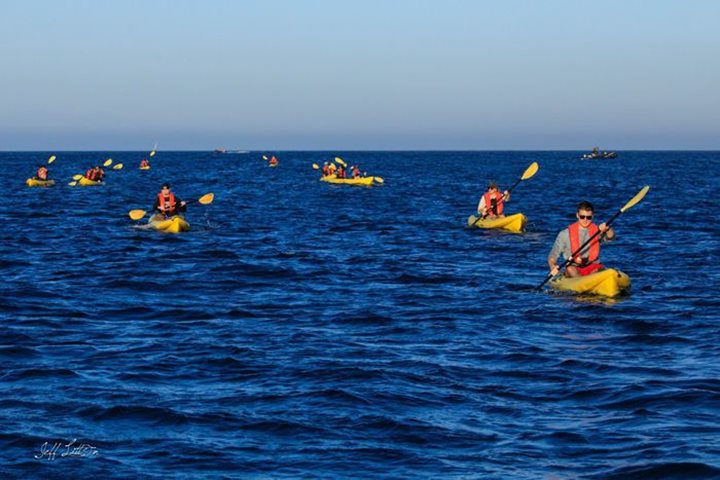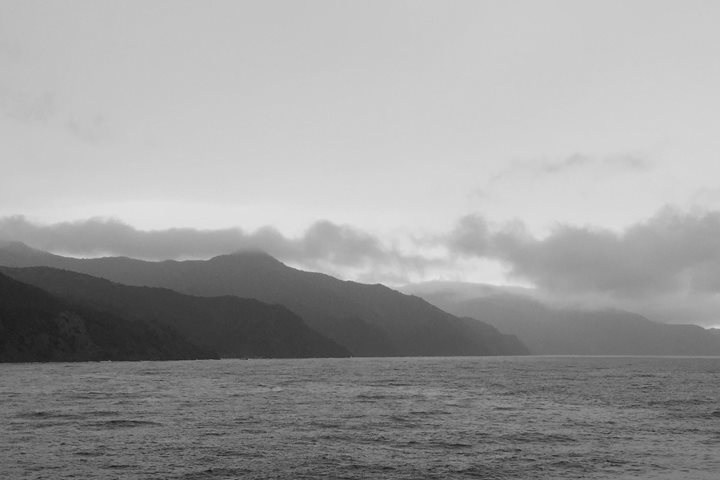National Geographic Venture arrived at her anchorage site in San Luis Obispo Bay just before breakfast. She was positioned a short distance off the community of Avila Beach. We had hoped to go ashore to visit the Point San Luis Lighthouse, which we could see from the ship as we entered the bay. It normally entails a challenging hike to reach the lighthouse, but heavy rains within the last week had forced closure the hiking trail. Arrangements were made to transfer everyone to the lighthouse by way of three motor trolleys on a paved road. The operation became a little more complicated for us because a storm system far offshore was sending in impressive swells, which were running directly into the bay about 30 degrees off from the local wind-generated waves. This created a confused wave pattern that made for a risky Zodiac operation, so we decided to forego the landing altogether and continue making our way southwards. This will allow us to arrive earlier than scheduled in the Channel Islands, tomorrow’s destination.
The rest of the day was at sea, all the while with the California coastline in observance. Our route took us past cliffs, hills, beaches, scrubland, and desert-like areas. Numerous state marine reserves line the shoreline end to end, which protect almost all the coastal waters in this region. This is an extremely important and productive marine ecological area because we were now within the zone where the southward-flowing California Current intermixes with the northward-flowing California Countercurrent. The phenomenon extends down to the Channel Islands, which are a relatively short distance south of us at the moment.
The seabird fauna is now quite different compared to what we have experienced the last couple of days. Several newly sighted species of seabirds were identified today, including sooty shearwaters, black-vented shearwaters, leach’s storm-petrels, and common murres. This is most likely due to the aforementioned mixture of currents. In addition, two humpback whales were sighted fairly close to the vessel, but wind, waves, and small whitecaps made it difficult to approach them. And, all the while, we could see California sea lions cavorting in the choppy seas.
The Rancho Guadalupe Dunes Preserve was very obvious from our vantage. One could easily imagine ancient times when Native Americans inhabited the area since there is no obvious modern development in view from the water. We could also see buildings associated with the Vandenberg Air Force Base, although the coastal lands near the base are newly preserved state land.
We continued with our lecture program during the rest of the day and learned about the amazing sea lions, seals, and seabirds of California, and were introduced to the Channel Islands. And, to spice things up, we offered a trivia contest about California.







